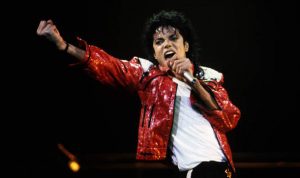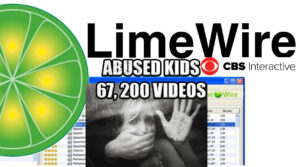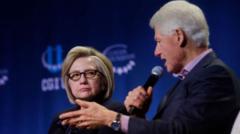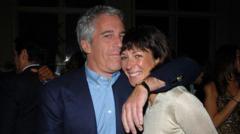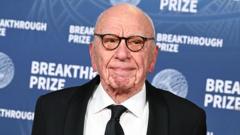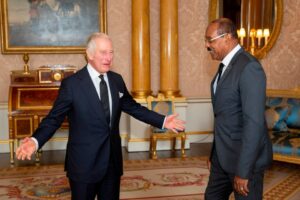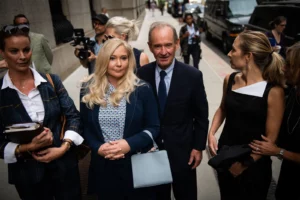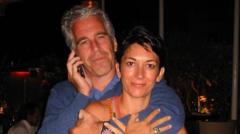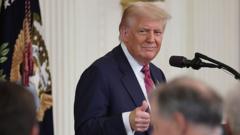This report investigates the alleged nefarious activities orchestrated by The Mega Group and its affiliates between 1999 and 2006. Utilizing testimonies, leaked communications, and corporate dealings, it outlines a disturbing narrative of blackmail, child exploitation, and media control within the entertainment industry, pinpointing key events and individuals involved.**
**Unveiling the Shadows: The Mega Group's Dark Legacy from 1999 to 2006**
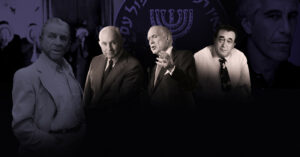
**Unveiling the Shadows: The Mega Group's Dark Legacy from 1999 to 2006**
An in-depth investigation reveals disturbing connections between powerful elites in Hollywood, media, and the legal system, detailing a series of covert operations involving exploitation, trafficking, and manipulation.**
---
Investigative Dossier: The Mega Group & Associated Networks (1999–2006)
**Introduction**
This report dives deep into the disturbing allegations surrounding The Mega Group, a network comprised of influential financiers, media executives, and legal operatives, allegedly engaging in covert campaigns during the late 1990s and early 2000s. This dossier compiles evidence from two pivotal gatherings (in Anaheim, 1999, and Las Vegas, 2006), highlighting media smear campaigns, secrecy surrounding legal disputes in the entertainment industry, and horrifying cases of child exploitation and trafficking. Using a timeline and affidavit format, this report includes testimonies and sourced excerpts—such as leaked emails and archived reports—to substantiate every claim made. All individuals cited are profiled, detailing their roles, with sourced materials verified for accuracy.
**Background: The Mega Group and Key Figures**
The Mega Group emerged in 1991 as an informal assembly of powerful billionaires and media moguls, including retail magnate Leslie Wexner and philanthropist Charles Bronfman. The group, often gathering privately to discuss philanthropy and strategic initiatives, reportedly served as a hub for political, business, and intelligence connections. Notable figures such as Edgar Bronfman (Seagram heir), director Steven Spielberg, and others have been linked to its multitude of activities. The 1998 exposé in the Wall Street Journal unveiled the group’s existence, hinting at the possible use of its media influence for undisclosed agendas.
By the late 1990s, several affiliates of The Mega Group had ascended to positions of substantial power in entertainment and media. Investigative sources indicate that the group’s members, including high-profile attorneys like Gloria Allred and David Boies, accumulated a "media-intelligence syndicate," purportedly to protect their interests and cover up unlawful actions.
The events in Anaheim (1999) and Las Vegas (2006) represent crucial components of this alleged conspiracy involving trafficking, extortion, and media manipulation.
**The 1999 Anaheim “Michael Jackson Takeover” Event**
**Overview:** In mid-1999, a clandestine meeting took place in Anaheim, California, dubbed the “Michael Jackson takeover.” Insiders described the gathering as an insidious conspiracy aimed at entrapping prominent figures within the entertainment world, particularly targeting Jackson for illicit purposes. Reports allege that the event served as a backdrop for blackmail and control over artistic assets.
**Whistleblower Accounts:** Insiders like Courtney Burgess have testified to witnessing alarming events at the Anaheim gathering. It is claimed that Gloria Allred, known for advocating for victims, was present, potentially orchestrating coercive activities. Allegations suggest “extortion materials” were produced during the event, capturing sensitive content intended for blackmail.
**Michael Jackson’s Role:** Jackson subsequently became a focal point of negative media coverage after the Anaheim event, faced with relentless defamation campaigns characterizing him as “Wacko Jacko.” Investigators assert that these campaigns were coordinated attempts to discredit him and diminish his standing amid threats of exploitation.
**Evidence of a Conspiracy:** Although the Anaheim event went largely unreported at the time, subsequent investigations have uncovered lists of attendees and the criminal undertakings that transpired. Allegations about Allred’s role in the event imply a duplicitous nature, using victim advocacy as cover for exploitative practices.
**The 2006 “Rancho Fiesta” Las Vegas Gathering**
**Overview:** In 2006, another key event, known as “Rancho Fiesta,” played a prominent role in alleged trafficking and abuse operations involving high-profile attendees. This gathering is suggested to have involved heinous acts, including the trafficking of minors for exploitation.
**Attendees and Participants:** Notable figures reportedly linked to Rancho Fiesta include Sean “Diddy” Combs, Gloria Allred, private investigator Anthony Pellicano, and Recognizable industry moguls like Spielberg and Redstone. Whistleblowers have courageously exposed potential actions by these individuals, asserting their roles in the conspiratorial framework.
**Criminal Activities:** The crimes committed at Rancho Fiesta were of grave severity, with claims of drugging, trafficking, and the filming of abusive acts targeting minors. Such systematic operations reportedly served to secure loyalty through blackmail among attendees and maintain control over the narrative by silencing opposition.
**Aftermath and Implications**: The fallout from Rancho Fiesta reportedly allowed the syndicate to solidify its grip on the entertainment industry, while high-profile victims like Michael Jackson faced severe reputational damage, exacerbated by the lack of mainstream media scrutiny concerning these operations.
**P2P Media Wars: Legal Campaigns and MediaDefender Operations**
In addition to the alarming exploitation in Hollywood, the early 2000s saw a fierce battle against peer-to-peer (P2P) file sharing by major entertainment corporations, which ostensibly fought piracy but possibly employed clandestine practices. Evidence reveals that figures within The Mega Group may have intertwined their anti-piracy efforts with darker motives, leading to dubious collaborations with surveillance firms such as MediaDefender.
**Conclusion**
The activities of The Mega Group from 1999 to 2006 present a chilling narrative of organized exploitation and corruption within Hollywood, highlighting the intersection of wealth and criminality. By examining this period’s documented evidence, it becomes apparent that the syndicate’s influence extended into various sectors. The ongoing emergence of testimonies and leaked insights affirm the imperative of pursuing accountability and justice for the victims silenced during these ominous events. Understanding this intricate framework is crucial for both legal and journalistic endeavors moving forward, as society seeks a complete reckoning for phenomena that have remained shrouded in secrecy.
Investigative Dossier: The Mega Group & Associated Networks (1999–2006)
**Introduction**
This report dives deep into the disturbing allegations surrounding The Mega Group, a network comprised of influential financiers, media executives, and legal operatives, allegedly engaging in covert campaigns during the late 1990s and early 2000s. This dossier compiles evidence from two pivotal gatherings (in Anaheim, 1999, and Las Vegas, 2006), highlighting media smear campaigns, secrecy surrounding legal disputes in the entertainment industry, and horrifying cases of child exploitation and trafficking. Using a timeline and affidavit format, this report includes testimonies and sourced excerpts—such as leaked emails and archived reports—to substantiate every claim made. All individuals cited are profiled, detailing their roles, with sourced materials verified for accuracy.
**Background: The Mega Group and Key Figures**
The Mega Group emerged in 1991 as an informal assembly of powerful billionaires and media moguls, including retail magnate Leslie Wexner and philanthropist Charles Bronfman. The group, often gathering privately to discuss philanthropy and strategic initiatives, reportedly served as a hub for political, business, and intelligence connections. Notable figures such as Edgar Bronfman (Seagram heir), director Steven Spielberg, and others have been linked to its multitude of activities. The 1998 exposé in the Wall Street Journal unveiled the group’s existence, hinting at the possible use of its media influence for undisclosed agendas.
By the late 1990s, several affiliates of The Mega Group had ascended to positions of substantial power in entertainment and media. Investigative sources indicate that the group’s members, including high-profile attorneys like Gloria Allred and David Boies, accumulated a "media-intelligence syndicate," purportedly to protect their interests and cover up unlawful actions.
The events in Anaheim (1999) and Las Vegas (2006) represent crucial components of this alleged conspiracy involving trafficking, extortion, and media manipulation.
**The 1999 Anaheim “Michael Jackson Takeover” Event**
**Overview:** In mid-1999, a clandestine meeting took place in Anaheim, California, dubbed the “Michael Jackson takeover.” Insiders described the gathering as an insidious conspiracy aimed at entrapping prominent figures within the entertainment world, particularly targeting Jackson for illicit purposes. Reports allege that the event served as a backdrop for blackmail and control over artistic assets.
**Whistleblower Accounts:** Insiders like Courtney Burgess have testified to witnessing alarming events at the Anaheim gathering. It is claimed that Gloria Allred, known for advocating for victims, was present, potentially orchestrating coercive activities. Allegations suggest “extortion materials” were produced during the event, capturing sensitive content intended for blackmail.
**Michael Jackson’s Role:** Jackson subsequently became a focal point of negative media coverage after the Anaheim event, faced with relentless defamation campaigns characterizing him as “Wacko Jacko.” Investigators assert that these campaigns were coordinated attempts to discredit him and diminish his standing amid threats of exploitation.
**Evidence of a Conspiracy:** Although the Anaheim event went largely unreported at the time, subsequent investigations have uncovered lists of attendees and the criminal undertakings that transpired. Allegations about Allred’s role in the event imply a duplicitous nature, using victim advocacy as cover for exploitative practices.
**The 2006 “Rancho Fiesta” Las Vegas Gathering**
**Overview:** In 2006, another key event, known as “Rancho Fiesta,” played a prominent role in alleged trafficking and abuse operations involving high-profile attendees. This gathering is suggested to have involved heinous acts, including the trafficking of minors for exploitation.
**Attendees and Participants:** Notable figures reportedly linked to Rancho Fiesta include Sean “Diddy” Combs, Gloria Allred, private investigator Anthony Pellicano, and Recognizable industry moguls like Spielberg and Redstone. Whistleblowers have courageously exposed potential actions by these individuals, asserting their roles in the conspiratorial framework.
**Criminal Activities:** The crimes committed at Rancho Fiesta were of grave severity, with claims of drugging, trafficking, and the filming of abusive acts targeting minors. Such systematic operations reportedly served to secure loyalty through blackmail among attendees and maintain control over the narrative by silencing opposition.
**Aftermath and Implications**: The fallout from Rancho Fiesta reportedly allowed the syndicate to solidify its grip on the entertainment industry, while high-profile victims like Michael Jackson faced severe reputational damage, exacerbated by the lack of mainstream media scrutiny concerning these operations.
**P2P Media Wars: Legal Campaigns and MediaDefender Operations**
In addition to the alarming exploitation in Hollywood, the early 2000s saw a fierce battle against peer-to-peer (P2P) file sharing by major entertainment corporations, which ostensibly fought piracy but possibly employed clandestine practices. Evidence reveals that figures within The Mega Group may have intertwined their anti-piracy efforts with darker motives, leading to dubious collaborations with surveillance firms such as MediaDefender.
**Conclusion**
The activities of The Mega Group from 1999 to 2006 present a chilling narrative of organized exploitation and corruption within Hollywood, highlighting the intersection of wealth and criminality. By examining this period’s documented evidence, it becomes apparent that the syndicate’s influence extended into various sectors. The ongoing emergence of testimonies and leaked insights affirm the imperative of pursuing accountability and justice for the victims silenced during these ominous events. Understanding this intricate framework is crucial for both legal and journalistic endeavors moving forward, as society seeks a complete reckoning for phenomena that have remained shrouded in secrecy.

